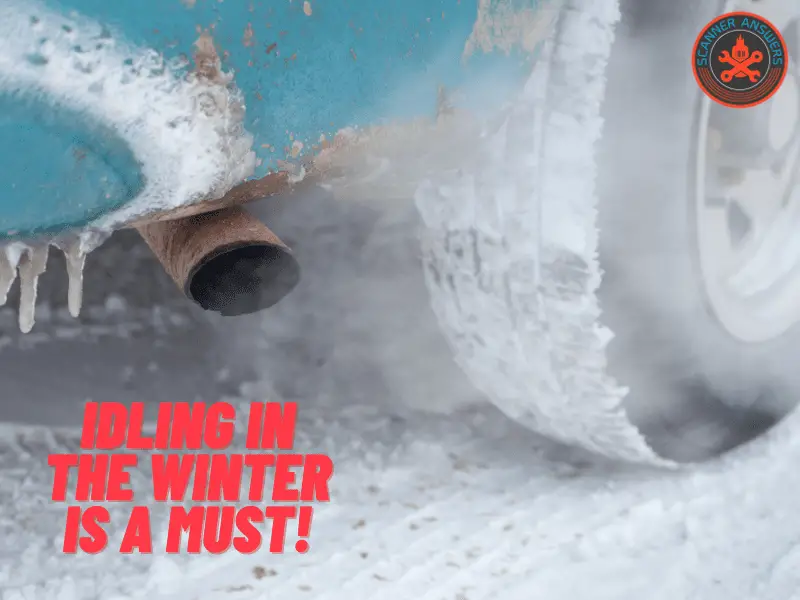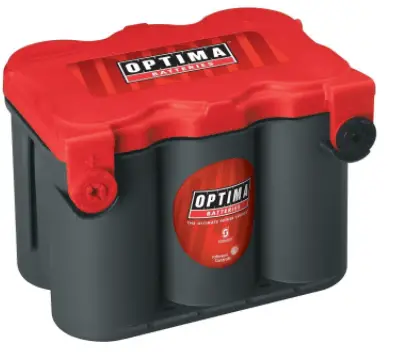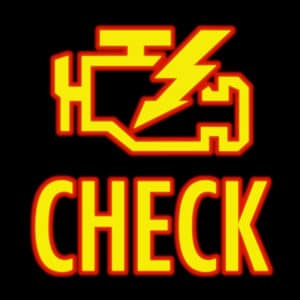All of us idle our cars, more than we’d like to admit. Sometimes we have to let the car idle in traffic or at drive-thru restaurants. And if it’s cold outside, we warm up before heading out.
We all know that letting a car idle for long periods of time is harmful to the environment, but what does this mean for your car? How long can a car idle before something bad happens?

[su_panel background=”#ffff” shadow=”2px 2px 2px #eeeeee” radius=”4″]
How Long Can a Car Idle?
As a rule, I recommend that you do not let your car idle for more than 5-10 minutes. I’ve seen a lot of suggestions that 30 seconds is the max idle time, but frankly this is a load of garbage. Most vehicles idle at stop lights longer than 30 seconds. Ever been stuck in traffic? Yeah, you’re vehicle will sit idling longer than a few minutes for 5pm rush hour hour…
However, with that said, there is a balance. If you let your car idle on a regular basis for lengthy periods (greater than 10 minutes), there are potential problems.
If your car has a full tank, you can let your car idle for many hours. Many people “warm up” their cars by leaving it running in the driveway on chilly mornings. This helps to get the parts moving, the fluids flowing, and heat running warm on a cold winter morning.
Traffic jams are another example of how you can let your vehicle idle for quite a while without causing permanent damage. You may have turned my car off completely in a vehicular stop, but it doesn’t always make sense to add strain to the ignition while in stop-and go traffic.
You might even find yourself asking how issues from idling could appear.
Idling Drains Your Battery
Both the alternator and motor run slowly when a vehicle idles. The alternator provides enough voltage to charge the batteries, and there are a few things that can cause the alternator to not be able to keep up to the demand for power. This shifts the burden to the car battery and drains it.

You may also have to use high-powered accessories like stereos or headlight electronics, or an alternator that is defective and charges too low (or none at all).
Read more about battery sizes and alternators.
Overheating and Idling
Many drivers complain that their car heats up when they leave it running, but cool down when driving. Here’s the most likely culprits we’ve found:
- fan belt
- low coolant
- a defective gauge
- faulty coolant temperature sensor
However, it depends on which vehicle it is. It is best to take your car to a mechanic, so they can diagnose the problem and possibly fix it before it gets worse.
If your check engine light is on, grab yourself and Android or iPhone OBD2 scanner to pull the DTC.

What about the A/C?
Low airflow through radiators means that the engine is not running. The engine could heat up if there are problems with its cooling system. The condenser does not require refrigerant (Freon) to cool down a car that is on the road. This is because there’s enough airflow at high speed.
An idling vehicle, on the other hand, requires more cooling fluid to prevent overheating. Although some may say it’s okay to leave your AC on while you idle, the additional strain on your vehicle will show in the end.
If the cooling system is in good condition, the air conditioner should work for a reasonable amount of time without any problems, other than the possibility that it will start to burn gas.
For relief from the sun, park your car under a shaded area and open the windows. You can also opt to go to a coffee shop, where you can enjoy your AC while sipping a refreshing beverage.
If you’re still having AC not blowing cold, we have a guide to that.
Here are Some Reasons Not to Idle Your Car:
If you leave your car idling for more than an hour, that can waste up to half of a gallon of gas. Idling consumes over six billion gallons annually in the US, at a cost of more than $20 billion.
It also causes pollution, which is bad for the environment. Each gallon of gas used produces about 20 tons of carbon dioxide, which is the major contributor to global warming.
It can also increase car maintenance costs and reduce engine life, along with a few other negative effects.
Here are some ways to reduce the harms of idling your car:
- If you are going to be stationary for longer than 2 minutes, turn off your car.
- You can warm your car by driving around the block, not idling.
- You can warm up your car’s interior by driving it around, instead of being stuck in a parked car, inhaling toxic exhaust fumes, or sitting idle.
- Never leave your car idling in the garage! You can risk carbon monoxide poisoning from exhaust fumes.
- If it looks like you’re going to be stuck at a traffic light for more than a few minutes, avoid idling your vehicle’s engine for too long.
- Turn your car off when you’re waiting for your kids to get out of school.
Gas vs Diesel When Idling

There's a lot of controversy regarding idling with a diesel engine. Many Over-the-road trucks (semis) idle for 25% of their life... which is a long time! The bottom line is that idling wont hurt a diesel as much as a gasser, but you should still avoid idling longer than 10 minutes with a diesel truck or pickup.
If you like to idle your diesel, try to keep the engine RPMs over 1,000. Guys like Moparman has guides to building one for a 24-valve Cummins.
Engine Operation
The gasoline engine uses gas mixed with compressed air by pistons. This mixture is ignited by spark plugs to propel the car. In a diesel engine, however, compression occurs first. This makes the air hot and causes the fuel to ignite when it touches the hot air.
Fuel Injection
Diesel and gasoline engines use injection differently. Fuel injection can be done in two ways with a gasoline engine: either a port injection system, or a carburetor. The port injection system injects gas into the engine right before the intake stroke. A carburetor, on the other hand, mixes gas and air before compressing it.
Diesel engines inject the fuel directly into the cylinder.
Power Output
Horsepower refers to power, and torque is the force exerted on the engine’s driveline. Your vehicle will not move quickly if it has a lot of horsepower but very little torque, because a car is powered by torque.
Diesel engines have more torque, but less horsepower. This is why big trucks tend to have diesel engines, while sports cars have gasoline engines. For heavy loads, big trucks require more torque and horsepower than gasoline.
There are Differences in Efficiency
Other than differences in power, efficiency is another key difference between gasoline and diesel engines. A diesel engine has higher fuel economy than gasoline engines. This is due to the way that engines work. The self-ignition temperature of a gasoline engine must be kept below 100°C during compression strokes to avoid engine damage, as gas engines must maintain a low compression ratio.
Diesel engines don't need more fuel during the intake stroke. This allows them to compress air more effectively and have a higher compression ratio. Higher compression ratios equals higher energy efficiency. Gas gives more quick power for speed, while a semi's diesel engine has more power for pulling loads a gas engine never could.
There is No Need to Idle for Extended Periods
Most people have heard that diesel engines can be left idling for an indefinite period, and that this is even beneficial to them. Is this true? According to Diesel Pickup Specialists, Inc, Inman, KS, yes and no.
Diesel engines were left running for many reasons back in the day. They could be hard to start when they are cold and take a while to warm up. Also, diesel fuel would gel if it was too cold, causing fuel lines and components to stop working. It was better to keep an engine running than shut it down.
Modern diesels work a bit differently and are much more efficient. Diesel engines consume far less fuel than gasoline engines while they are running, and it is also true that they use much less fuel when they are running. Diesel engines are long-lasting, and semi drivers who leave their truck running overnight can still expect to get hundreds to thousands of miles.
Even so, prolonged idle is not good for your engine. It isn’t necessarily bad for your engine, but it is not a good idea. Most diesels work well when they are cold and warm up quickly. They also don’t have any gelling problems. Modern diesel trucks don’t offer the same tradeoff between keeping your engine running and turning it off.
Winter and Summer Idling
Winter
Factory remote start systems are set to idle for 10 minutes at a time, but Natural Resources Canada advises drivers to use this feature wisely and avoid excessive idling. On a cold winter day, they recommend that you idle your car engine for no longer than three minutes.
If you don't have time, start your engine for at most 30 seconds before shifting into gear and pulling away. This gives lubricants time to circulate and coat all moving components.
Allow your car to run for just enough time to remove fog and frost from the inside windows. Then, use an ice scraper. Remember, when your car idles, it can bring additional pollution with it.
Summer
You should not leave your car running in summer. Heat is hard on your battery, can cause a faulty alternator, wear down your fan belt, and lead to problems with your cooling system. The one caveat here is that sometimes the young, elderly, and others with illness need the A/C for their well-being.
If it is an especially hot day, be sure to plan ahead to avoid any situations where you have to idle for a long while.
[/su_panel]
[su_panel background="#ffff" shadow="2px 2px 2px #eeeeee" radius="4"]
Final Thoughts:
Say no to unnecessary idle driving.
Asking how long a car can idle demands a follow-up question. How long should I leave my car idling? Just because you CAN let your engine run until the fuel gauge hits empty without harming your car engine, that doesn't necessarily mean that you should.
If you go somewhere, and you leave your car running with your AC on full blast until the gas tank is empty, you may be doing more harm to your car than good. Not to mention how the fumes cause additional pollution and harm the environment.
Idling is okay, but burning more gas means more time at the gas pumps. And more time at the gas pumps means more money out of your wallet.
But heck, it's your money, and your vehicle, so do what you want 🙂
[/su_panel]